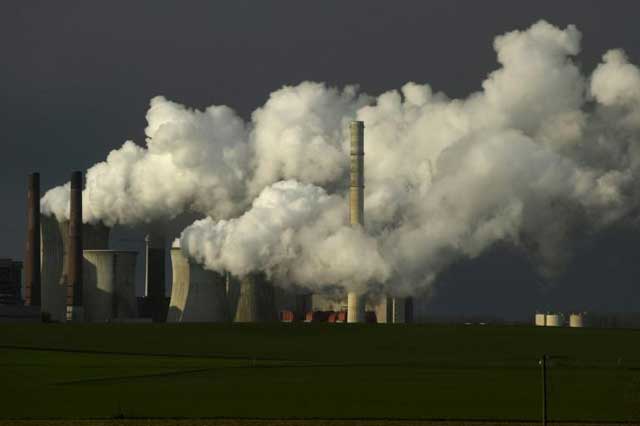
NEWS ANALYSIS | THE INDEPENDENT | Researchers in energy say the just-ended UN Climate Summit will be remembered as one of the most important moments in the UNI fight against Climate Change.
They have indicated it was quite decisive because of the historical results with a wave of new deals which included the agreement on loss and damage and liability payments.
A person who has been at those summits will observe that each is judged by the number of deals signed during the conference which normally lasts two weeks.
Several people that URN has talked to indicate that from the very beginning, COP28 meant business right from the World Climate Summit held at the beginning of December.
“The climate action summit at the start was a remarkable positive note. But again, two weeks later the talks closed on something quite unprecedented. The acknowledgment of the need to transition away from fossil fuels” said Steven Knell, the Vice President and Head of Wood Mackenzie’s Power & Renewables Consulting division for Europe, the Middle East, Africa, Russia, and Caspian.
Steven Knell was among the experts who addressed Journalists and climate experts about the Post-COP28 reflections. Wood Mackenzie, also known as WoodMac, is a global research and consultancy group supplying data, written analysis, and consultancy advice about Energy.
Knell observes the importance of the decision urging the parties to transition to cleaner energy cannot be overstated.
“It has taken over thirty years to get that statement done. From Real, Kyoto to Paris. Some of the COPS that I have attended we have never been able to reach a statement on this point” he said.
He notes that the Dubai conference gave the energy transition a much-needed boost. As the conference closed on Wednesday, some anti-fossil campaigners expressed concern that the conference failed to agree on a terminology that would bring an end to fossil fuels as part of the global energy mix.
Some countries like Uganda which are yet to begin the production of their newly discovered oil and gas resources came out of the negotiations with a temporary sigh of relief. Uganda has been negotiating under the Least Developed Countries group, the Africa Group as well as the G77 and China Groups.
Those groups have been pushing for a just transition and were opposed to the phase-out of fossil fuels. Steven Knell told a virtual meeting attended by URN that COP 28 was much more inclusive and much less prescriptive than the past Conferences of the Parties (COPs).
“So it is neither one energy system nor another but the acknowledgment of the value that the current energy system offers local and global energy economies,” he said.
Close to 200 countries agreed to the Global Stocktake text which will guide the development of the National Determined Contributions (NDC) or in simple terms the county climate actions aimed at limiting global greenhouse gases.
This was the first global stocktake exercise after the Paris Agreement in 2015 (COP15). The countries reviewed their NDC and negotiated the next steps.
What next for oil and gas developments? As country delegates arrive in their countries, the question about the future of fossil fuels especially with the transition agreement hangs in the air.
Prakash Sharma, Vice President, Scenarios and Technologies at Mackenzie said the language used in calling for a transition from fossil fuel was balanced with compromise. He said while there has been a suggestion to phase out fossil fuel, the world still runs on more than 80% fossil fuel today.
“The war in Ukraine underlined the extent to which the world is still dependent on fossil fuels for energy security. A 2050 phase-out of fossil fuels may be achievable in that time frame. But I will require building a low-carbon supply twice the rate of energy demand growth” said Sharma who is responsible for global net zero emissions scenario modeling.
Oil and gas will still be needed In Wood Mackenzie scenarios, it is assumed that oil demand will drop by 100 million barrels a day to around 30 million barrels a day in 2050.
“We also expect that the world will still need to continue investing in new supply because production will decline faster than demand,” predicted Sharma.
He is of the view that if renewable energy technologies like solar, wind, hydropower, and geothermal among others don’t more than double in the coming years, then oil and gas could continue being part of the global energy systems. The transition to renewable energy will depend on climate finance and the transfer of technologies.
“We believe tripling of solar and wind by 2030 is achievable and our net zero scenarios suggest a similar outcome but it must be accompanied by various infrastructure,” said Sharma.
The good and bad news for the transition is the fact that concerns about energy security concerns have been at the center stage since the Russian invasion of Ukraine.
In Africa where over 600 million people lack access to electricity, countries are pushing the use of liquefied natural gas as a “transitional fuel” There is a feeling that a rapid shift from fossil fuels will create shortages in the number of markets.
“There is a feedback loop that needs to be understood. And that is why I guess there was a kind of implied consensus at the conference that these two energy systems need to go hand in hand for a while. And I think there was a reference e to transitional fuels. Which is natural gas” said Sharma.
In the West, many believe that natural gas and LNG should act and bridge fuels that would help to shift from coal-based power generation.
****
URN
 The Independent Uganda: You get the Truth we Pay the Price
The Independent Uganda: You get the Truth we Pay the Price


